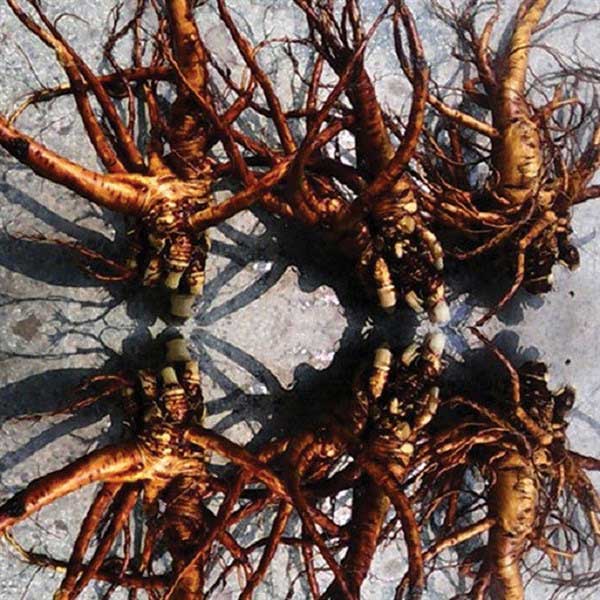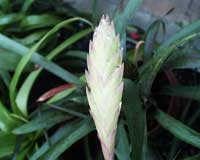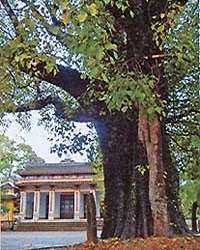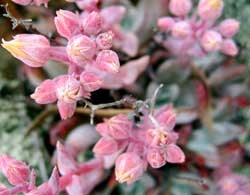Recently, many products on the market have been advertised as being made from Đại Quang ginseng, which contains various valuable active ingredients. In reality, it is merely a type of plant belonging to the dock family.
The Truth About the Expensive Ginseng
There are currently numerous products claiming to be made from Đại Quang ginseng, yet none provide the scientific name. Folklore has circulated about the “miraculous” benefits of this plant, such as curing many diseases, including cancer (!).
It is said that this plant was discovered by the great Zen master Tuệ Tĩnh (14th century) at the foot of Dành Mountain (Bắc Giang). The master used it as a tonic and to improve eyesight, hence the name Đại Quang ginseng.
Some media outlets have even published articles stating that the Đại Quang ginseng variety grows quite well and adapts to the local climate. This ginseng can be harvested after just one year, yielding an average of 200 grams per plant. The quality of Đại Quang ginseng is claimed to be comparable to that of Ngọc Linh ginseng currently available on the market.

The root system of the plant touted as “Đại Quang ginseng”.
To support this claim, the article provides analysis tables of the harvested ginseng’s quality, showing that the anti-aging index of Đại Quang ginseng is 17%, compared to 52% for Ngọc Linh ginseng.
All other pharmacological indices are equal to or better than those of Ngọc Linh ginseng. Currently, “Đại Quang ginseng” is sold on the market at various prices, ranging from 7 to 20 million VND/kg, with some sellers offering prices between 40 to 100 million VND/kg.
So what is the real story behind “Đại Quang ginseng”? What kind of plant is it, and does it have the “miraculous” medicinal value as rumored? Can it be compared to other types of ginseng or Ngọc Linh ginseng?
“Đại Quang ginseng” is actually a plant from the dock genus (Rumex), in the Polygonaceae family. The Rumex genus in Vietnam comprises seven species. According to descriptions and illustrations in the book “Vietnamese Plants,” this plant is known as dương đề nhăn, or Yellow dock in English, with the scientific name Rumex crispus L.
In other botanical texts, the Rumex crispus species is referred to as curled dock, or wrinkled dock, and goat foot. The Rumex crispus has many subspecies. The wrinkled dock in Vietnam has not yet been studied in terms of subspecies classification.
The wrinkled dock is a perennial herb that typically grows upright, reaching a height of 40 to 80 cm. It has a solid, smooth stem, often reddish in color. The leaves are simple, alternate, green, smooth, lanceolate, measuring 18 to 25 cm long and 2 to 7 cm wide, tapering at both ends with wavy and crinkled edges (hence the name “wrinkled dock”).
The flowers are bisexual, and the calyx consists of six segments arranged in two whorls, with the inner whorl persisting on the fruit. The fruit is triangular, measuring 2 to 3 mm long and 1.2 to 1.7 mm wide. The base of the fruit is pointed and short, while the apex is slightly longer, with a cross-section that is triangular. The fruit is surrounded by three heart-shaped sepals. The seeds are diverse.
The wrinkled dock is quite common in Vietnam, growing in moist areas near forests, mountain creeks, along streams, roadsides, and riverbanks… It is found in Hanoi, Nam Định, Ninh Bình, Lâm Đồng, and Cần Thơ. This species is also present in India, China, Japan, Laos, Indonesia, Europe, North Africa, and the Americas.
No Relation to Ginseng Species
According to the “Analysis & Testing Report” from the Institute of Medicinal Materials, Hanoi (March 19, 2016): A sample of “Đại Quang ginseng” from a pharmaceutical company contained flavonoids, coumarins, reducing sugars, and triterpenoids. There were no tannins, saponins, cardiac glycosides, or polysaccharides.
According to foreign literature, the leaves and roots of Rumex crispus extracted with methanol, ethanol, acetone, and water contain flavonoids, phenols, proanthocyanidins, saponins, and alkaloids. The concentration of these compounds is higher in the roots than in the leaves.
This plant contains anthraquinone glycosides (emodin), which have a laxative effect. The anthraquinone glycoside content in the plant parts is as follows: roots 1.17%, stems 0.54%, leaves 0.66%, and fruits 0.49%.
The roots are rich in iron, making them useful for treating anemia. The young leaves can be eaten as vegetables, having a sour and slightly astringent taste, and are rich in vitamins A and C, as well as trace elements Fe and K. The older leaves are bitter. Nursing mothers should consume them sparingly, as they may cause laxative effects in infants.
According to the “Test Result Report” from the National Institute of Food Safety Inspection (September 12, 2017), another sample of “Đại Quang ginseng” from a different pharmaceutical company contained arginine, alanine, serine, threonine, glutamic acid, aspartic acid, trace elements K, Cu, Fe, Co, and notably ginsenosides (Rg1 0.2 mg/kg and Rb1 0.38 mg/kg).
The accuracy of this test result needs to be re-evaluated, as the Rumex genus (Polygonaceae family) cannot contain ginsenosides. Ginsenosides are active compounds found in ginseng (from the Panax genus, Araliaceae family) or Korean Red Ginseng.
In folklore, people have circulated tales of the miraculous benefits of “Đại Quang ginseng.” Many believe this plant can cure various ailments such as colon issues, liver cirrhosis, fatty liver, high cholesterol, blurred vision, diabetes, prostate enlargement, vertigo, low blood pressure, enhance male vitality, improve skin health for women, boost immunity, and even fight cancer?!
“Đại Quang ginseng” has no relation to ginseng species in the Panax genus, which belong to the Araliaceae family. It also cannot contain ginsenosides. Currently, the herbal market has a widespread misuse of the term “ginseng,” leading to unfortunate misunderstandings.
Consumers should not trust rumors or articles lacking scientific basis, especially concerning medicinal plants that can impact health and life.





















































